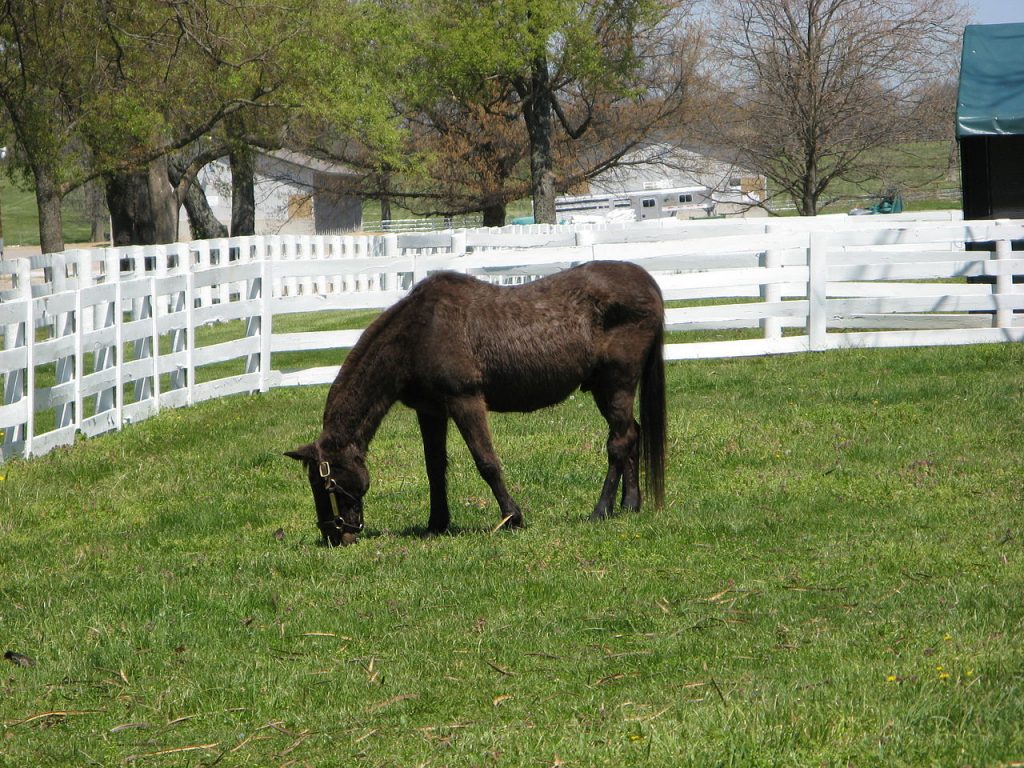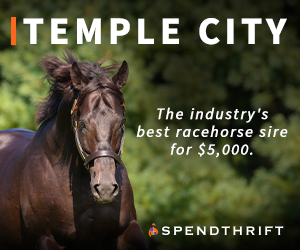
The Great John Henry – Kentucky Horse Park on April 3rd, 2007- Joe Brell
By Dawn LeFevre
“Looks don’t win races” has been the mantra of horse trainers for as long as there have been racetracks. While beauty will net you a blue ribbon in the show ring and an exorbitant price in the auction pavilion, it doesn’t guarantee you a place in the winner’s circle. Take The Green Monkey, for example. As a yearling, he was considered such a superb specimen of horseflesh that he commanded a $16 million price tag at auction. He failed to win a single race.
The plain undersized, obscurely bred John Henry cost a mere $1100 at the Keeneland mixed sale, yet he went on to earn $6.5 million. Ironically, John Henry suffered from a conformational defect known as being “back at the knee”, which is supposed to shorten a horse’s racing career. Apparently no one told John Henry. While his race record and bank account speak to his brilliance, John Henry’s legacy was his longevity – racing for seven straight years and twice earning Horse of the Year honors, the second time at the tender age of nine.
Small, ordinary and knobby-kneed, Seabiscuit went from former claimer to champion, capturing America’s heart and inspiring countless books, documentaries and movies. Described as an “ugly cripple” Morvich nevertheless won twelve straight races, including the Kentucky Derby. And then there was poor Elwood, a colt so homely that his trainer, C.E. Durnell, didn’t bother to show up to saddle him for the 1904 Kentucky Derby. And his wife owned the horse! No matter, Mrs. Durnell simply enlisted someone else to perform the task and wound up becoming the first woman to own a Derby winner.
But perhaps the most beloved ugly duckling of all was Exterminator, a gangly gelding affectionately nicknamed “Old Bones” by his fans. He was purchased by Willis Sharp just ten days prior to the 1918 Kentucky Derby as a work horse for Sun Briar, his Two Year Old Champion and the favorite for the race. Sharpe thought little of Exterminator and snidely referred to him as “That Goat”. However when Sun Briar developed ringbone and had to be scratched from the Derby, it was Old Bones who stepped in and won the day. Exterminator would go on to race an incredible 99 times, winning 50 with 17 seconds and 17 thirds while carrying crushing weights. He was voted Champion Older Male Horse from 1920-1922 and Horse of the Year in 1922.
Long before horse racing fans celebrated the extraordinary talents of dark leggy beauties such as Ruffian and Zenyatta, there was the pitch black, mousy mare named Imp. Imp was a running machine at three – racing 50 times with 14 wins and 33 in the money finishes. As a four year old she became the first filly to capture the Suburban Handicap and was voted Horse of the Year. In her remarkable 171 race career, Imp won at distances from sprints to marathons, beating colts on numerous occasions with 62 victories, 35 seconds and 29 thirds. Her fans may have nicknamed her “My Coal Black Lady” but Imp was forged in steel.
Bayakoa suffered from crooked legs and a severe overbite known as a “parrot mouth”, which caused her tongue to stick out as she ran. Nevertheless, Bayakoa won 13 graded stakes, two Breeders’ Cup Distaffs, and earnings of over $2.8 million. She was also voted Champion Older Mare in 1989 and 1990. Bayakoa may not have been a beauty queen but she never looked more stunning than when she was flying down the stretch, tongue flapping to the beat of her stride.
Short and stocky with his tail dragging on the ground, Northern Dancer looked more Shetland pony than future champion when he was presented at the 1962 yearling auction. Nobody wanted him, at least not at the $25,000 reserve price. What the buyers didn’t know was that they had just passed up not only a Kentucky Derby and Preakness winner but also the greatest sire of his generation. This sales ring reject would go on to earn Champion Three Year Old honors, sire 147 stakes winners and have a profound impact on Thoroughbred breeding in North America, Great Britain and Ireland.
While many Thoroughbreds do indeed run as beautiful as they look, no horse looks better than when it’s standing in the winner’s circle. And to bettors, beauty is in the size of the payoff.



